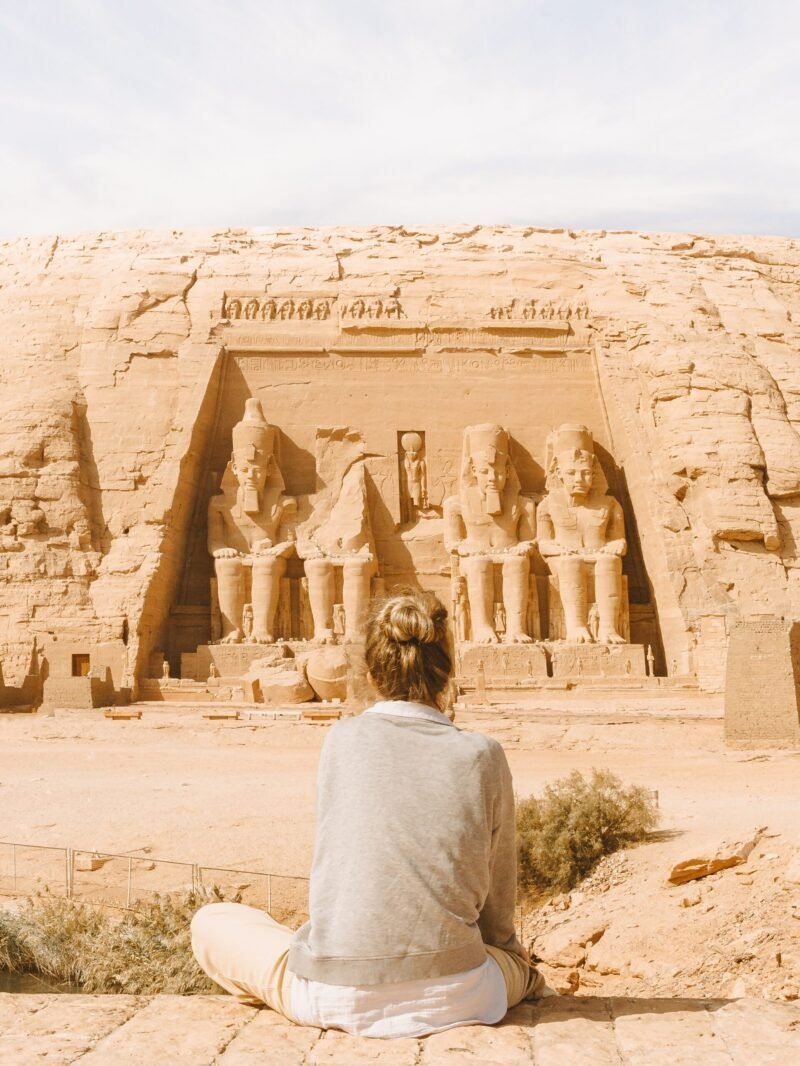It isn’t often that men collected their structural abilities and also lined them up with nature’s ability to create a phenomenon that stood the test of time. Then again, ancient Egyptians have built structures that still baffle scientists and architects until today. The great Nubian Temple known as Abu Simbel is one of these mind-blowing structures. What makes the Abu Simbel sun phenomenon so unique is that the entire complex was moved during nineteen sixty eight and modern day scientists yet again created a structure-nature marriage that draw people to Egypt twice a year.
The temples of Abu Simbel are two colossal structures that were carved into rocks. It stands in what is known as Nubia, which is about two hundred and thirty kilometers southwest of Aswan. The Temples now stand on the western bank of Lake Nasser and is a UNESCO World Heritage site.
During the reign of King Ramses II, these temples were constructed which were to be lasting monuments of himself and his beloved wife, Nefertari. When Lake Nasser and the Aswan High Dam were built, this temple was in jeopardy and in nineteen sixty eight they created an artificial hill high above the Aswan High Dam. The relocation of these temples should be considered miraculous, but the contents of this blog post is dedicated to the Abu Simbel Sun Festival that takes place approximately twenty two February and twenty two October yearly.
For most of the year, the inner chamber of the main temple at Abu Simbel is shrouded in darkness. On two days, which are to be the birthday of King Ramses II, followed by his coronation as pharaoh, a shaft of sunlight beams into the sanctum and illuminates the statues of the gods and King Ramses II.
On the twenty second of February, which is the birthday and again on the twenty second of October, which is the coronation day, the statues of the sun god Re-Horakhte and Amon-Ra are light up together with that of King Ramses II. The forth statue in this sanctum is of the god of darkness, Pta. What is even more striking of this sunlight phenomenon, is that the forth statue is never illuminated, not on these two day nor any other day of the year.
The Abu Simbel Sun spectacle has been occurring for more than three thousand two hundred years and even with the intervention of modern day construction, it still occurs with thousands of tourists flocking to Egypt to witness this from happening. To understand the selection of dates, the Egyptian calendar was based on three hundred and sixty five days per year, although the solar calendar was minutely different with every passing year. Seeing as the temple faces east, the sun thus shines on it twice a year.
Abu Simbel is perhaps the largest rock-cut structure in Egypt, which is amplified with the fact that the complex houses two magnificent temples. For those who visit the complex by road and not by Nile Cruise, it is surely an eye opening experience to say the least. As they enter, they find themselves looking at the smaller temple – the one dedicated to the wife Nefertari, and they often feel dissatisfied because they expected to see something larger in size. It is when they turn around that they are faced with the real McCoy, the grand temple of the pharaoh himself.
Both temples with their individual sanctums display the life and achievements of the king. As with most ancient structures in Egypt, size is the dominating wow factor. This temple is made up of four statues that are twenty two meters high and guard the entrance of the temple. Family members are also visible which include the pharaoh’s mother, wife Nefertari and son Amonherkhepshef. The three connected halls of the temple extend up to fifty six meters into the mountain.
Many travelers who are spiritually and historically inclined plan for years to witness this event. Most tour companies provide quite exciting tours that not only focus on the Sun Festival, but also on visitors seeing all the other amazing sights of Egypt. Classical tours start in Cairo with the sights and history of the Pyramids, Sakkara and Old Cairo, visitors move on to Aswan, usually via Nile Cruise, until the day before the Sun Festival. The cruise boat is then docked in Lake Nasser and very early morning people make their way to the temple to await the sunrise. The days go hand in hand with locals singing ancient songs that were believed to call and thank the sun.
Here is a video that gives a bit of insight to what happens on the days of the Sun Festival.








